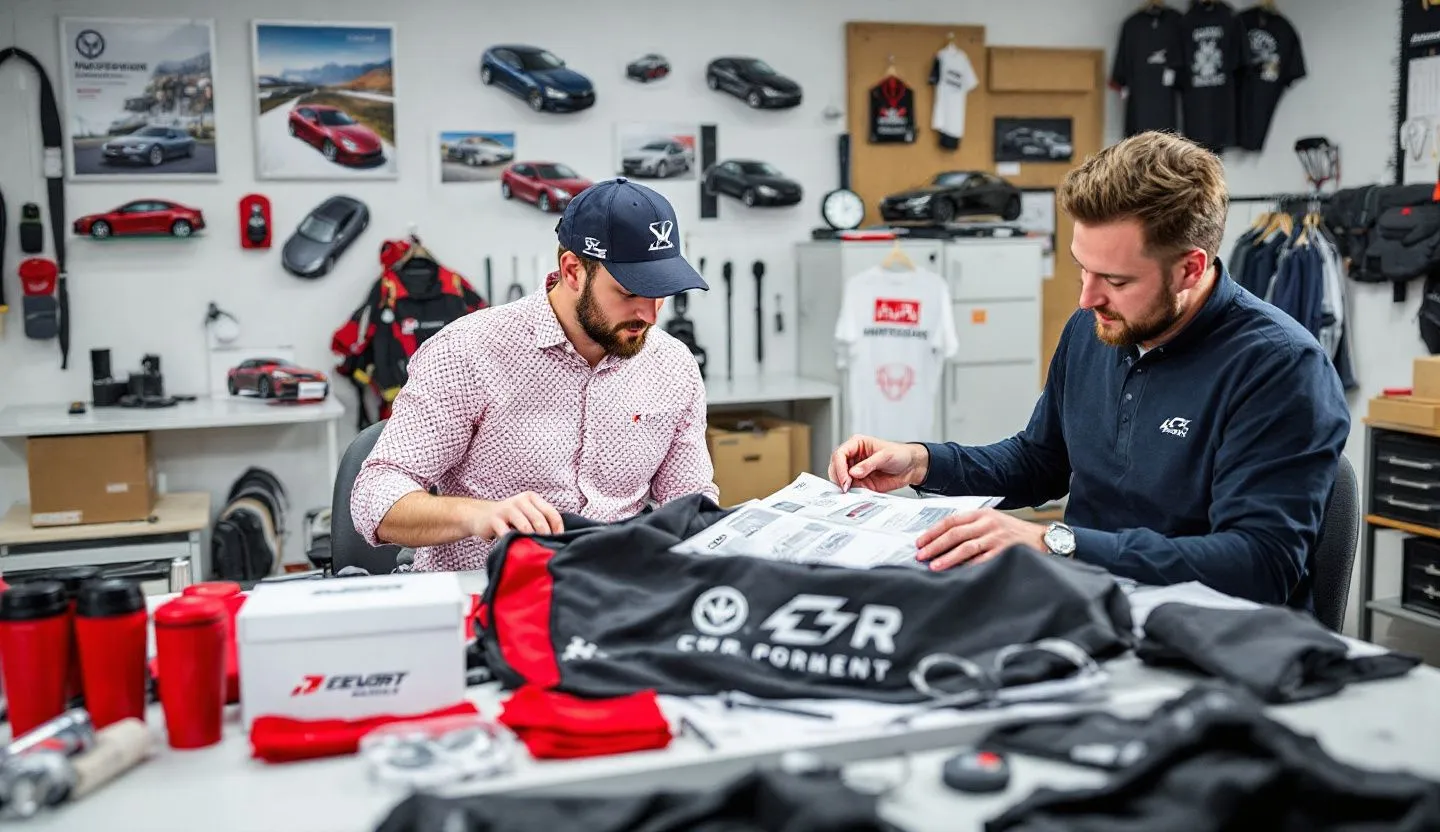If you’ve ever stood in a dealership conference room,brochures in hand, colleagues eyeing you for quick approvals, the clock ticking toward a looming campaign launch,you know the tension. The balance between brand consistency, compliance, and the relentless pressure to go faster is a daily grind for enterprise automotive marketers. We’re expected to deliver more content, at higher quality, in more formats, across more channels, for more stakeholders,without losing control of our brand or running afoul of regulations. The expectation is scale, but the reality is often chaos.
Why manual content operations are holding us back
We’ve all lived the pain of manual content operations. Even in 2024, it’s not uncommon to find global auto brands relying on endless email threads, tracked changes in Word docs, and design requests lost in the shuffle. Each new campaign means rounds of versioning, creative approvals, and asset wrangling. The sheer volume of touchpoints,from national TV spots to local dealer flyers, from social posts to showroom signage,creates a sprawling, high-stakes game of telephone.
The risks are familiar and real. I’ve seen teams spend weeks customizing a product launch kit for dozens of regions, only to discover a critical spec was missed or an outdated logo slipped through. A single error,say, a non-compliant finance disclosure in a regional ad,can trigger regulatory headaches and dent hard-earned trust. Meanwhile, overworked marketers burn out juggling last-minute requests from sales, legal, and partner managers. The cost is more than time; it’s brand reputation, compliance exposure, and missed market opportunities.
The shift: Why automotive content automation is no longer optional
What’s changed? In short: the scale and speed of modern automotive marketing have outgrown manual processes. The rise of digital retail, omnichannel customer journeys, and personalized experiences is rewriting the rules. Our audiences expect seamless, on-brand interactions everywhere,whether browsing online configurators, scrolling Instagram, or picking up a brochure at the dealership.
The operational complexity is staggering. Consider a new vehicle launch: You might need hundreds of creative variations, each tailored for local regulations, partner co-branding, and audience segments. Meanwhile, every asset must reflect current specs, incentives, and legal disclaimers. Multiply that by your product portfolio and global footprint, and it’s clear,manual workflows can’t keep up.
Automotive content automation is emerging as the answer. It promises to eliminate repetitive manual work, accelerate campaign execution, and, crucially, maintain rigorous brand and compliance controls. But there’s a catch: Many leaders worry automation means sacrificing creative quality or losing the nuanced control that’s critical in a regulated, brand-sensitive sector like automotive.
How content automation actually strengthens brand control
Let’s get one thing straight,automation, done right, doesn’t mean “set it and forget it.” It means building smart guardrails that empower teams to move faster, collaborate better, and deliver more consistent, compliant content at scale.
Here’s what that looks like in practice:
- Centralized brand templates and guidelines: With a content automation platform, every asset,whether a digital banner, POS sign, or partner email,starts from a locked, approved template. Brand fonts, colors, imagery, and messaging are embedded by default. Local teams and dealers can customize the content they need (swap in local offers, update pricing, add regional images), but only within pre-set parameters. No more rogue design tweaks or off-brand creative slipping through.
- Automated compliance and legal checks: Automotive marketers know the pain of legal reviews. With automation, legal and risk teams can pre-load approved disclaimers, finance language, and regulatory statements into templates. If a team member tries to remove or alter a required disclosure, the system flags it instantly,or blocks the change outright. This reduces back-and-forth, speeds time-to-market, and ensures nothing goes live without meeting compliance standards.
- Dynamic content feeds and real-time updates: Specs, pricing, incentives, and imagery change constantly in automotive. Automation platforms integrate with your product information management (PIM) and digital asset management (DAM) systems to feed the latest data directly into every asset. Update a vehicle’s MSRP or feature set once, and it cascades to every brochure, web page, and ad automatically. No more hunting down outdated PDFs or correcting errors after the fact.
- Role-based access and approval workflows: Automation doesn’t mean losing oversight. In fact, it enables granular control. Creative directors, legal, and compliance teams can set who can edit, approve, or publish each type of content. Automated routing ensures the right eyes see every asset before it goes live,without bottlenecks or missed steps.
Real-world impact: How leading automotive brands are winning with automation
Let’s bring this down to the dealership floor. A global automotive brand recently rolled out a content automation platform to over 1,500 dealers across North America and Europe. Previously, every local marketing request (from a new lease flyer to a holiday event banner) required a flurry of emails to the central brand team, days of design work, and slow legal signoff.
Now, dealers log into a central portal, select the template they need, drop in their local details, and generate on-brand, compliant assets in minutes. The brand team sets the creative guardrails, and legal language is locked. The result? Content production time dropped by 70%, creative errors plummeted, and local teams felt empowered,not restricted.
It’s not just about speed. When a major product recall hit, the brand was able to update messaging and legal disclaimers across every dealer asset,print and digital,in under 24 hours. That kind of agility isn’t possible with manual workflows.
Addressing common fears: Will automation kill creativity or flexibility?
Let’s be honest,many of us have an instinctive wariness of automation. We fear it’ll flatten our creative edge, strip out local nuance, or turn every asset into a cookie-cutter copy. In automotive, where brand storytelling and dealer relationships are everything, those are legitimate concerns.
But the best automotive content automation solutions are built for flexibility within guardrails. Creative teams can design rich, modular templates with space for local imagery, co-branding, or tailored messaging,without allowing off-brand fonts or unsanctioned campaign themes. It’s not about locking down creativity; it’s about channeling it in ways that protect the brand, speed up production, and make everyone’s life easier.
I’ve seen regional marketing teams use automation to quickly spin up campaign variations for unique local events,while staying 100% on-brand. Instead of fighting for creative resources, they’re empowered to move fast and focus on driving results.
What makes automotive content automation different from generic automation?
You might ask: Can’t we just use a generic marketing automation tool? Automotive content automation is purpose-built for the industry’s unique needs.
- Complex regulatory environment: Automotive marketing is governed by strict legal, finance, and advertising standards that vary by market and product line. Automation platforms for automotive embed these requirements into every template, ensuring compliance by default.
- Dealer network dynamics: Most auto brands operate through vast dealer networks with varying marketing capabilities. Automotive content automation gives dealers self-serve access to on-brand materials,while central teams maintain oversight.
- Rapid product and incentive changes: Vehicle specs, pricing, and incentives shift constantly. Automotive-focused automation integrates with product and incentive management systems to keep all materials up-to-date in real time.
- Co-branding and local adaptation: Automotive brands must balance global consistency with local relevance. Purpose-built automation allows for flexible customization,within strict brand parameters.
How to approach content automation in your automotive organization
Getting started with automotive content automation isn’t about flipping a switch. It’s about identifying the biggest bottlenecks, compliance risks, and brand pain points,and then designing a system that addresses them. Here’s how I’ve approached it with my teams:
- Map your content ecosystem: Start by auditing every asset type, channel, and stakeholder involved in your content operations. Where are the manual handoffs? Which assets are most prone to errors or delays? This will reveal where automation will drive the most value.
- Define your brand and compliance guardrails: Work with creative, legal, and compliance teams to codify your brand standards, required legal language, and approval workflows. The goal is to translate these into dynamic templates and rules in your automation platform.
- Select the right platform: Not all content automation tools are created equal. Look for solutions purpose-built for automotive, with robust template management, integration with your PIM/DAM, and granular access controls.
- Pilot, iterate, and scale: Start with a high-impact use case,say, regional retail campaigns or dealer event kits. Gather feedback, refine your templates and workflows, and then expand to other areas. Make sure to bring IT, legal, and operations partners along for the journey.

The role of IT, compliance, and legal in successful automation
Automotive content automation isn’t just a marketing play,it’s an enterprise initiative. IT, compliance, and legal teams are critical partners. I’ve found that bringing them in early,before vendor selection or process design,pays huge dividends.
IT ensures the solution integrates securely with core systems (like your PIM, DAM, and CRM) and meets data privacy requirements. Compliance and legal teams help codify rules, disclosures, and approval logic. Their involvement means automation becomes a tool for risk reduction, not a source of new headaches.
For example, when we rolled out automated legal disclaimers, our compliance team built dynamic rules that surfaced the right disclosure based on asset type, region, and offer. Instead of every marketer memorizing legal nuances, the system handled it,reducing risk and freeing up creative time.
Speed-to-market, at scale, without sacrificing the brand
- Campaigns launch faster, because local teams can self-serve approved assets.
- Brand consistency improves, because every asset is built from the same dynamic templates.
- Compliance risk drops, because legal checks are embedded by design.
- Creative teams spend less time on repetitive requests, and more time on big ideas.
The outcome? Automotive brands become more agile, responsive, and resilient,able to pivot quickly when market conditions shift, without sacrificing the integrity of the brand.
What’s possible when content automation becomes part of your culture
When content automation is woven into the fabric of automotive marketing operations, the results are transformative. I’ve seen teams move from firefighting mode,reacting to every urgent dealer request,to proactive, strategic execution. The time saved on manual asset creation is reinvested in creative storytelling, campaign optimization, and data-driven innovation.
Dealers and regional teams feel empowered, not constrained. They can run local campaigns, respond to market trends, and deliver relevant experiences,knowing they’re always on-brand and compliant. For enterprise marketing leaders, it means more visibility, less risk, and the freedom to focus on what really matters: building a brand that wins hearts (and market share).
Automotive content automation isn’t just a technology upgrade,it’s a strategic shift that redefines how automotive brands operate at scale. By eliminating manual work from content operations, we free our teams to focus on what truly moves the needle: creative storytelling, data-driven insights, and building meaningful connections with customers. The old tradeoff,speed versus control,no longer applies. With the right automation in place, we achieve both: campaigns reach market faster, and every asset reflects the brand’s standards and values, down to the last detail.
As automotive marketing leaders, we’re tasked with delivering more content, to more audiences, in more formats, all while navigating a complex web of regulations and brand requirements. Content automation empowers us to meet these demands head-on,streamlining execution, safeguarding compliance, and elevating the brand experience across every channel and touchpoint. The path forward is clear: by embracing automotive content automation, we don’t just keep pace with change,we set the pace for our industry.







